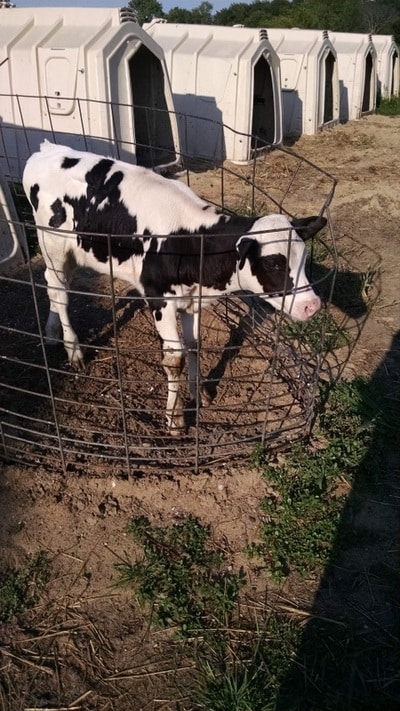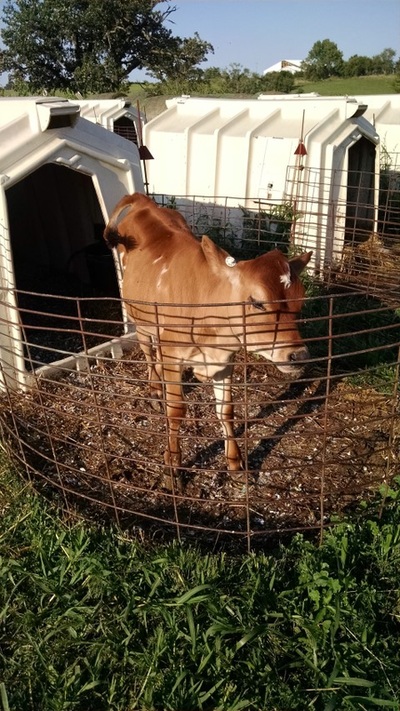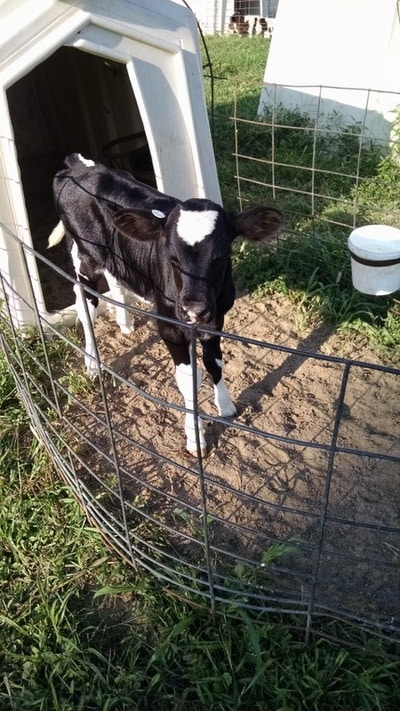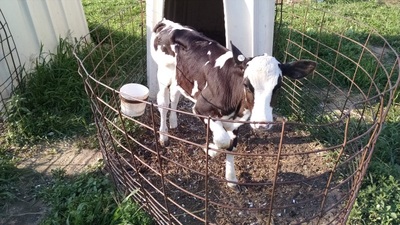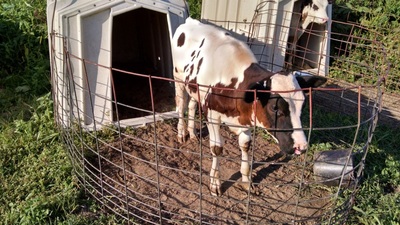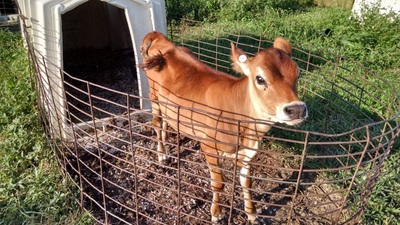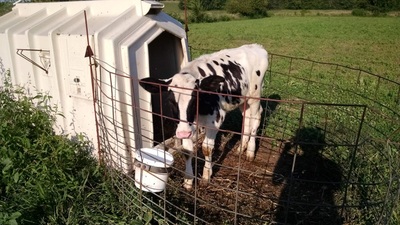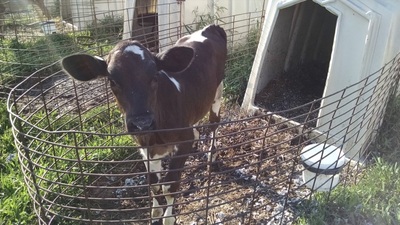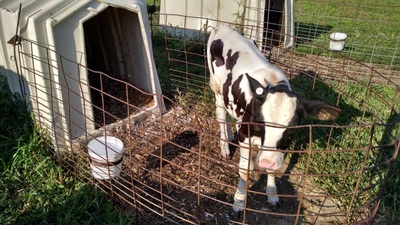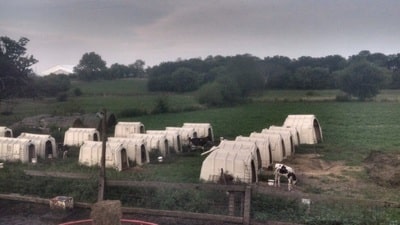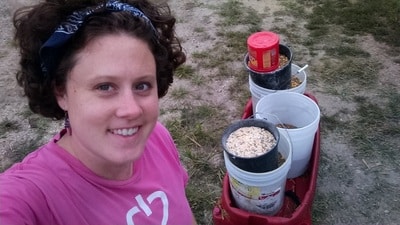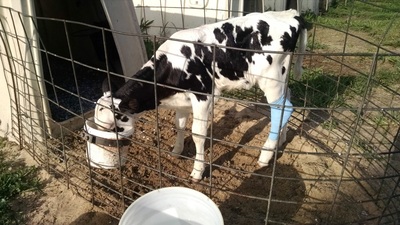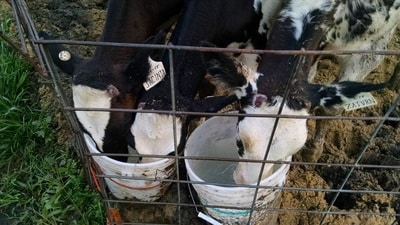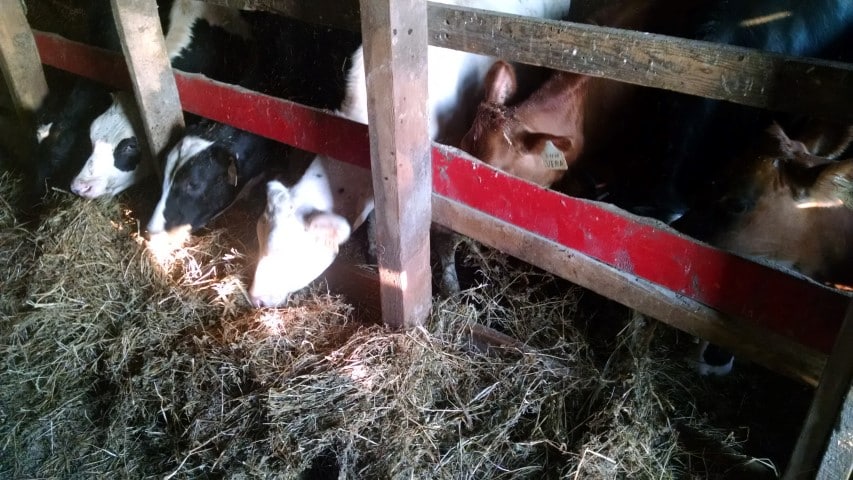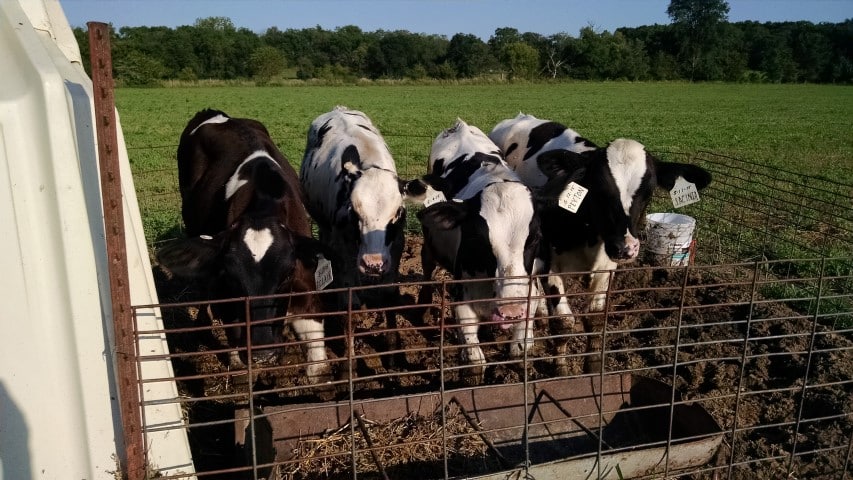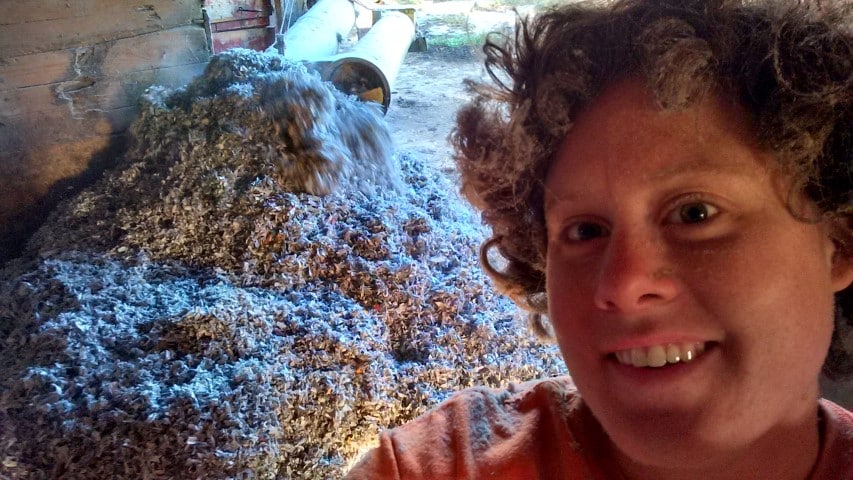Now I thought about calling it calf care, because really that’s what it is but then I thought more about it and decided at least for me they really are calf chores. Not that I’m not caring for the calves because as you find out that’s all calf chores are about but let’s be honest when you do your dishes, mow your lawn, dust, clean your toilet, shovel snow, or any other variety of jobs around your house to CARE for it, do you call it “household care” or “chores”? I think most people call them chores. You might even like doing some of those things but it’s still a chore, at least some of the time – something that has to be done to properly care for your house and family.
So here’s a typical morning or evening of calf chores on our current farm.
Water. Lots and lots of water. Lots and lots of water that must be carried to calves in 5 gallon buckets. Calf chores start and end with water. We try and give our calves the water that’s already been used once to cool our milk down (a more complicated mechanical process than I can tell you about!) which means we have a little hose that water runs out of into 5 gallon buckets that we carry out to the calves and then take back for refill after refill. This also means the little calves don’t have to drink the cold water straight from the well.
AND, we give them water in the middle of the day as well. For the most part Dan’s mom did this while Dan was recovering but if she had meetings and had be be gone I’d run down and fill up those buckets! Calves are thirsty creatures, especially in the summer!
Next is grain, which varies depending on how old the calf is – we have 3 different kinds of grain and grain mixes that we’ll even mix together more as they transition between the grain types. For both carrying water and grain buckets I borrowed the kid’s little red wagon to haul the buckets back and forth, making less trips to and from our “hut city”.
After they’re all fed we make sure their living quarters are clean and comfortable. From birth to around 2 months each calf gets their own little hut to live in, helping keep any colds from passing too quickly while they’re especially young and susceptible. We can also keep a closer eye on them individually to see how much they’re eating or drinking or what their poop or pee looks like, so we can hopefully catch anything that’s off of normal as quickly as possible.
Next they head into big huts that can hold a small group of 4 calves, which helps them begin to socialize with other calves and we’re still able to keep a close eye on them. Eventually those groups are combined into even bigger and bigger groups until they have a baby and join the milking cows.
Finally, the little calves need to be fed milk. For the first few days we feed them their milk with a bottle and then transition them to drinking from a bucket. Calves get milk for 6-8 weeks before transitioning into drinking just water.
And that’s how we care for our calves, our calf chores. Really it’s much more in-depth than that… what questions do you have? Wanna help sometime?

